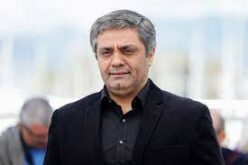Al-Monitor – US State Department spokesperson Ned Price said Oct. 12 that the nuclear talks are not the focus of US policy toward Iran, and that supporting the protesters is. Two days later, US Secretary of State Antony Blinken met with Iranian activists about what more the US can do to support the protests, including internet access.
The take here all along has been, and remains, that Iran wants a deal, for the obvious economic windfall that would follow, and to provide some breathing space for its people. And the Biden administration wants a deal because it considers the Joint Comprehensive Plan of Action (JCPOA) as the best means to prevent an Iranian nuclear weapon.
Now Iranian protesters, who have captured the attention of the world, are demanding more from leaders than just a return to the JCPOA. The US and the EU are exploring ways to support the protesters and censure those who are implicated in the violent crackdown on them following the death of Mahsa Amini while in custody for a hijab violation last month.
Talks to revive the JCPOA have been ongoing since the Biden administration came to office last year. US President Donald Trump withdrew from the deal in May 2018. The parties came close in August this year, but Iran made closing of a separate dispute with the International Atomic Energy Agency (IAEA) a condition of the JCPOA.
Iran Foreign Minister Hossein Amir-Abdollahian, in an exclusive interview with Al-Monitor last month, said that Iran was ready to provide answers on the separate safeguards dispute, and Iranian officials began discussions with the IAEA to close the file, as we reported here.
Iran warned this week of repercussions if the EU follows through on sanctions in response to the Iranian government’s crackdown on demonstrators. Tehran is saying that its own investigation into Amini’s death should be the basis for the EU approach to Iran on the matter, but the US and the EU aren’t buying it. Iran also claims the protests are the result of agitation from outside forces.
EU Foreign Policy Chief Josep Borrell tweeted today that he conveyed to Amir-Abdollahian the “EU’s clear and united position: people in Iran have the right to peaceful protest and to defend fundamental rights. Violent repression must stop immediately. Protesters must be released. Internet access and accountability are needed.”
With regard to the nuclear talks, “on hold” doesn’t mean “dead.” Neither side has said time’s up or threatened to walk away. For the Biden administration, the EU-brokered compromise is on the table, ready to be signed, if and when the Iranians are ready to do so. The holdup, per Washington, is in Tehran.
And Iran is still teasing the prospect of a deal. In a letter to EU ambassadors, Gholamhossein Dehghani, Iran’s ambassador to the EU, wrote that because “there is a real shot at the revival of the JCPOA post-US midterms,” it is critical not to let the protests upset EU-Iran ties further, as Politico reports.
While the US maintains a firewall between its Iran and energy policies, in pure economic terms, the OPEC+ decision to reduce production by 2 million bpd (more on this below) should otherwise be an incentive for both sides to finish the deal. The loss of 2 million bpd of cartel oil could be offset, in part, by 1 to 1.5 million bpd of Iranian oil, coming on at a price of approximately $100 per barrel. Bijan Khajehpour has the analysis here for Al-Monitor Pro on the potential impact of the return of Iranian oil and gas on global and European energy markets.
The Middle East, the global economy, and Ukraine
For most of the world, gloomy economic conditions and forecasts are forcing difficult choices to manage and mitigate energy and food price volatility — shocks resulting primarily, although not exclusively, from the war in Ukraine.
According to the latest IMF World Economic Outlook forecast, released this month, global GDP growth will decline from 6.0% in 2021, to 3.2% in 2022, to 2.7% in 2023: “the weakest growth profile since 2001 except for the global financial crisis and the acute phase of the COVID-19 pandemic.” Inflation is expected at 8.8% in 2022 and 6.5% in 2023. The risks, the report points out, are all on the downside.
In the Middle East, the record is mixed. Jihad Azour, director of the IMF Middle East and Central Asia Department, said the region is projected for 5% growth this year, above the global estimate of 3.2%, despite the food and energy price shocks caused by the Ukraine war, and an overall tightening of global financial markets. But the upbeat growth projection for this year, driven primarily by the Gulf oil producers, comes with an asterisk, as economic activity is expected to slow next year because of a decrease in demand for energy resulting from the global economic slowdown. Inflation for the MENA region is expected to be 14.1%, well above the global average, with middle-income and poor countries especially hard hit.
The bottom line, especially for fragile states and economies, is that the risks to political and economic stability in the MENA region are likely to grow as long as the price and energy shocks continue. The war came right on the heels of COVID-19; the MENA states barely caught their breath. The Gulf states have a buffer because of their energy resources, but their decisions, like the OPEC+ production cut last week, are also based on gloomy economic forecasts. Although there is near unanimity in condemnation of Russia’s actions in Ukraine, many would prefer a diplomatic off ramp to end the war sooner rather than later.
 Shabtabnews In this dark night, I have lost my way – Arise from a corner, oh you the star of guidance.
Shabtabnews In this dark night, I have lost my way – Arise from a corner, oh you the star of guidance.



